What's New Under The Sun
Preparing for the Solar Eclipse of April 8th 2024
Sunday, 24 March 2024 18:30
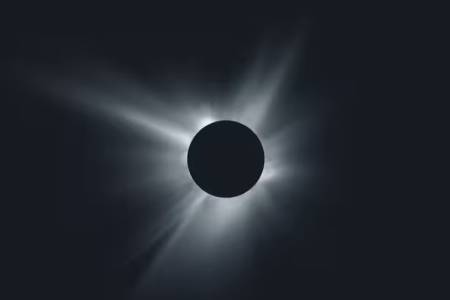 There are lots of maps showing where to go for the April 8th 2024 total solar eclipse and others showing the statistical chance of clouds such as https://www.washingtonpost.com/weather/2024/02/22/april-eclipse-clouds/ From Little Rock Arkansas to the Mazatlan coast there is a high probability of clear weather. The cities from Indianapolis through Cleveland OH, Rochester and Syracuse...
There are lots of maps showing where to go for the April 8th 2024 total solar eclipse and others showing the statistical chance of clouds such as https://www.washingtonpost.com/weather/2024/02/22/april-eclipse-clouds/ From Little Rock Arkansas to the Mazatlan coast there is a high probability of clear weather. The cities from Indianapolis through Cleveland OH, Rochester and Syracuse...
Seiko Designs Equatorial Sundial Watch
Sunday, 24 March 2024 01:42
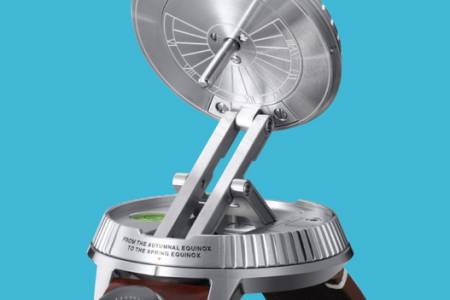 When is a watch not a watch? When it unfolds into an equatorial sundial. The watch, designed by Yu Ishihara is called a "Watch Exclusively for Sunny Men" and was part of a contest sponsored by Seiko to "help reimagine what a watch can be", aimed at creativity and perhaps for eventual production. Read about it at...
When is a watch not a watch? When it unfolds into an equatorial sundial. The watch, designed by Yu Ishihara is called a "Watch Exclusively for Sunny Men" and was part of a contest sponsored by Seiko to "help reimagine what a watch can be", aimed at creativity and perhaps for eventual production. Read about it at...
Rare Astrolabe Discovered by Chance in Verona Museum
Wednesday, 06 March 2024 00:17
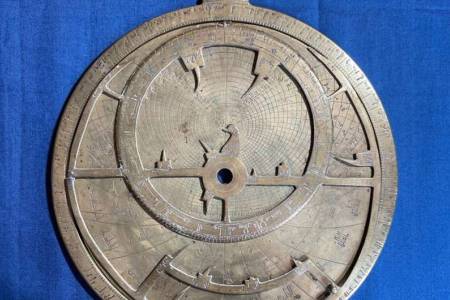 Dr. Federica Gigante, from Cambridge Univerity's History Faculty, discovered a rare astrolabe sequestered in a museum at Verona, Italy. Publishing in Nuncius (1 March 2024) Dr. Gigante presents "a hitherto unknown remarkable astrolabe from Al-Andalus which likely belonged to the collection of Ludovico Moscardo (1611–1681) assembled in Verona in the seventeenth century. The...
Dr. Federica Gigante, from Cambridge Univerity's History Faculty, discovered a rare astrolabe sequestered in a museum at Verona, Italy. Publishing in Nuncius (1 March 2024) Dr. Gigante presents "a hitherto unknown remarkable astrolabe from Al-Andalus which likely belonged to the collection of Ludovico Moscardo (1611–1681) assembled in Verona in the seventeenth century. The...
NASS 2024 Conference to be held in Vancouver, BC June 20-23
Friday, 23 February 2024 17:42
 The North American Sundial Society (NASS) will hold its 2024 conference in Vancouver, British Columbia, Canada from Thrursday June 20th to Sunday June 23rd. The conference will be held at the Fairmont Hotel Vancouver, 900 West Georgia Street, Vancouver BC. The conference will start Thursday afternoon with a traditional reception and sundial door prizes. Friday will be a...
The North American Sundial Society (NASS) will hold its 2024 conference in Vancouver, British Columbia, Canada from Thrursday June 20th to Sunday June 23rd. The conference will be held at the Fairmont Hotel Vancouver, 900 West Georgia Street, Vancouver BC. The conference will start Thursday afternoon with a traditional reception and sundial door prizes. Friday will be a...
World Sundial Day
Friday, 23 February 2024 16:53
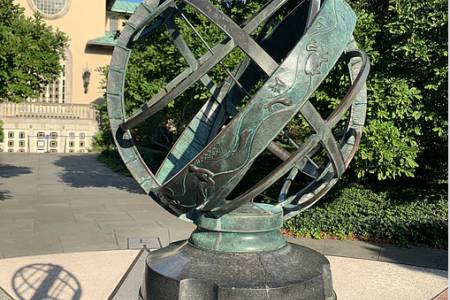 Spanish sundialist Esteban Martínez has launched the resolution to establish the World Sundial Day to occur each year on the Spring Equinox. According to the petition circulated by Martinez,
"Reason Sundials represent the union of disciplines as disparate as Astronomy, Mathematics, [and] Geography...They have an undoubted didactic value in teaching astronomy to young people and as...
Spanish sundialist Esteban Martínez has launched the resolution to establish the World Sundial Day to occur each year on the Spring Equinox. According to the petition circulated by Martinez,
"Reason Sundials represent the union of disciplines as disparate as Astronomy, Mathematics, [and] Geography...They have an undoubted didactic value in teaching astronomy to young people and as...
NASS Course "Elements of Dialing" Starts Jan 6, 2024
Saturday, 18 November 2023 18:21
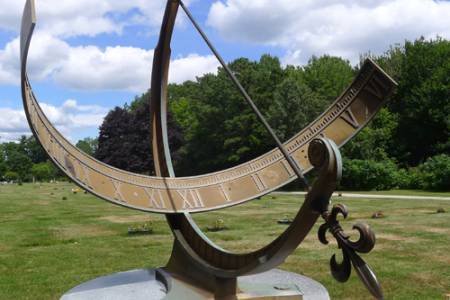 NASS is pleased to announce the upcoming third instance of Elements of Dialing, our introductory course about sundials, their history, and the science that makes them work. The free 13-lesson course, intended for those are new to sundialing, runs from January 2024. The course coordinator will be Steve Lelievre, our Secretary and editor of The Compendium. Steve will be assisted from time to time...
NASS is pleased to announce the upcoming third instance of Elements of Dialing, our introductory course about sundials, their history, and the science that makes them work. The free 13-lesson course, intended for those are new to sundialing, runs from January 2024. The course coordinator will be Steve Lelievre, our Secretary and editor of The Compendium. Steve will be assisted from time to time...
Smithsonian Photo Contest - Jaipur Sundial
Sunday, 05 November 2023 16:30
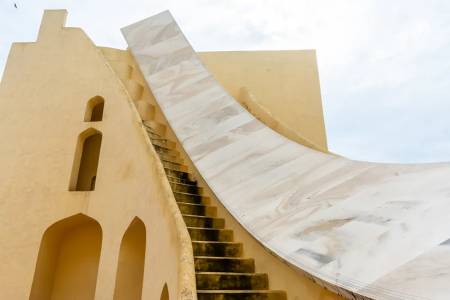 Smithsonian Magazine holds a photo-of-the-day contest. Winner on 30 Oct 2023 was Harita Sistu who took a photo of the large sundial of Jantar Mantar, Jaipur India (taken in July 2022). Harita notes: "I wanted to try my best to capture just how massive the instrument is and bring focus into the incredible skill that went into designing and constructing it."
See other NASS...
Smithsonian Magazine holds a photo-of-the-day contest. Winner on 30 Oct 2023 was Harita Sistu who took a photo of the large sundial of Jantar Mantar, Jaipur India (taken in July 2022). Harita notes: "I wanted to try my best to capture just how massive the instrument is and bring focus into the incredible skill that went into designing and constructing it."
See other NASS...
Houston Pavillion - World's Largest Sundial
Friday, 14 July 2023 23:08
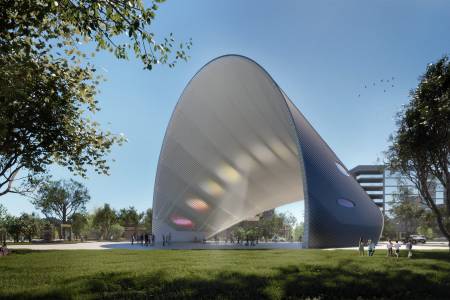 A sundial or performance center or solar generator? It's all three. Called the Arco del Tiempo (Arch of Time), the design by Berlin architect Riccardo Mariano provides the projection of the sun's rays onto the ground through tinted glass apertures spanning the length of its arching ceiling. The elliptical shaped spots change every hour, telling "the solar time each day and delight visitors with...
A sundial or performance center or solar generator? It's all three. Called the Arco del Tiempo (Arch of Time), the design by Berlin architect Riccardo Mariano provides the projection of the sun's rays onto the ground through tinted glass apertures spanning the length of its arching ceiling. The elliptical shaped spots change every hour, telling "the solar time each day and delight visitors with...
Sun Tower Update
Saturday, 01 July 2023 00:36
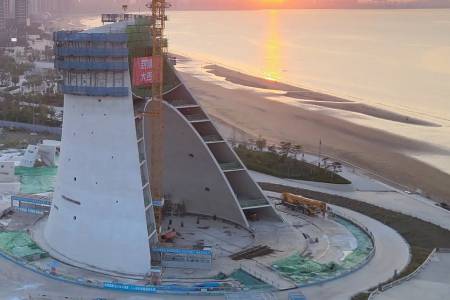 According to NewAtlas.com (https://newatlas.com/architecture/sun-tower-open/), construction of the Sun Tower exhibition building and outdoor theater is underway in the Chinese city of Yantai. The tower is being constructed by a French firm, Ducks Sceno and the engineering firm Arup, raising to 50m (164 ft) gracefully into the sky. The tower symbolizes the historic watch towers of...
According to NewAtlas.com (https://newatlas.com/architecture/sun-tower-open/), construction of the Sun Tower exhibition building and outdoor theater is underway in the Chinese city of Yantai. The tower is being constructed by a French firm, Ducks Sceno and the engineering firm Arup, raising to 50m (164 ft) gracefully into the sky. The tower symbolizes the historic watch towers of...
Point of Infinity Hyperbolic Monument in San Francisco
Sunday, 25 June 2023 22:17
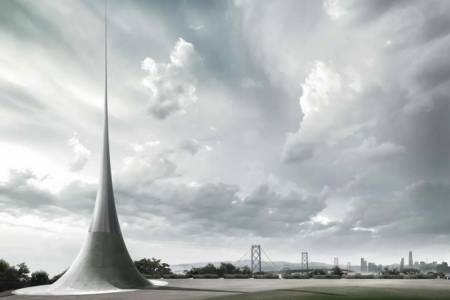 Julie Baumgardner in The Art Newspaper of Jan 13, 2023 reports on the construction project of Point of Infinity, a nearly 70 foot (21m) hyperbolic cone will reach toward the sky as part of a 50 million dollar park development on Treasure Island and Yerba Buena Island.
In a competition held by the San Francisco Arts Commision on behalf of the Treasure Island Development Authority, Hiroshi...
Julie Baumgardner in The Art Newspaper of Jan 13, 2023 reports on the construction project of Point of Infinity, a nearly 70 foot (21m) hyperbolic cone will reach toward the sky as part of a 50 million dollar park development on Treasure Island and Yerba Buena Island.
In a competition held by the San Francisco Arts Commision on behalf of the Treasure Island Development Authority, Hiroshi...
Ice Sculpture Ephemeral in Time
Thursday, 30 March 2023 00:03
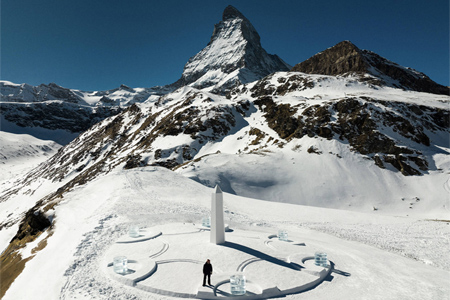 In the Swiss mountains near the resort of Zermatt just beneath the Matternhorn, Stir World reports that "famed luxury Swiss watchmaker Hublot announced Daniel Arsham as its new ambassador, with a compelling piece of temporary land art. Aptly titled "Light & Time", the work is a Hublot-inspired 20-metre sundial resting in the shadows of the Matterhorn mountain."
This sculptural is billed as...
In the Swiss mountains near the resort of Zermatt just beneath the Matternhorn, Stir World reports that "famed luxury Swiss watchmaker Hublot announced Daniel Arsham as its new ambassador, with a compelling piece of temporary land art. Aptly titled "Light & Time", the work is a Hublot-inspired 20-metre sundial resting in the shadows of the Matterhorn mountain."
This sculptural is billed as...
New Sundial for Kika Silva Pla Planetarium
Sunday, 18 December 2022 23:00
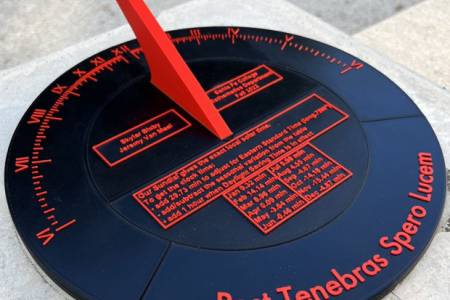 Sklar Bixby and Jeremy Meel, students at Santa Fe College in Florida took on a project to design and 3D-print a new sundial for the Kika Silva Pla Planetarium in Gainesville Florida (located on Santa Fe's Northwest Campus). Under the guidance of Dr. Philip Pinon, Sklar and Jeremy took on a semester long project as part of the Exploring Honors Mathematics class. They designed a horizontal sundial...
Sklar Bixby and Jeremy Meel, students at Santa Fe College in Florida took on a project to design and 3D-print a new sundial for the Kika Silva Pla Planetarium in Gainesville Florida (located on Santa Fe's Northwest Campus). Under the guidance of Dr. Philip Pinon, Sklar and Jeremy took on a semester long project as part of the Exploring Honors Mathematics class. They designed a horizontal sundial...
Kanaloa Stone Endangered
- Details
- Hits: 11044
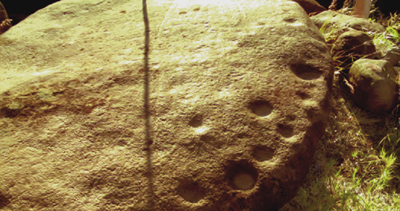
Kānaloa Stone Shadow Alignment
Photo: Kaho'olawe Island Reserve Commission
|
On Kaho'olawe, the smallest island of the Hawaiian island chain only 7 miles from Maui, sits an endangered and sacred rock, the Kānaloa, with petroglyphs and a row of 32 cupules (man-made depressions) along one edge. “It has significant celestial alignments with the rising and setting of the sun,” said Michael Naho'opi'i, Executive Director of the Kaho'olawe Island Reserve Commission (KIRC). It appears that there is a relationship between the shadow of a stick held vertically along lines etched in the stone and the cupules.
Documented as Site 110 feature BU, the Kānaloa stone is relatively flat and rests on a natural pedestal that when tapped, resonates with a bell-like ring. But its petroglyphs and alignment cups may soon topple into a nearby and ever growing ravine. In 2010 the Commission approved "The Cultural Use Plan: Kūkulu Ke Ea A Kānaloa" with one of the recommendations to preserve and stabilize the stone. The first phase of the plan has been to document the stone's celestial alignments and quantify the erosion forces acting on its base.
New Insights into Ancient Sundials
- Details
- Hits: 12791
Larisa N. Vodolazhskaya of the Department of Space Physics at Southern Federal University (SFU), Rostov, has brought two ancient time keepers together with a new and startling result. The story starts at the turn of the end of the 19th century with the discovery of an L-shaped bar found in the tomb of Thutmose III (1479-1425 BCE). that appeared to be a sundial. In the 1930's a "user manual" of sort was found carved on the tomb ceiling of Seti I (1290-1279 BCE) at Abydos. The ideal L-shaped bar had lines engraved with distances from a starting mark of 3, 6, 9, and 12 units. The Seti I text describes these spacings as "an established procedure". But what is the procedure?
al-Biruni's Cosmos
- Details
- Hits: 8802

Al-Biruni's diagram of the moon's phases.
Credit: photo reproduction from Seyyed Hossein Nasr, Islamic Social Science: An Illustrated Study (World of Islam Festival Publishing Co., 1976).
Photo use for non-profit educational purposes only.
|
Ibn al-Shatir, whom we give credit for inventing the first modern sundial with gnomon pointing to the celestial pole in 1371 C.E., is but one of many scientific scholars of Central Asia during the “Eastern Renaissance” that lasted from about 800 to 1500 C.E. In this week’s issue of Science, [20 June 2014] Richard Stone reviews the accomplishments of Abu Rayhan al-Biruni (born 973 C.E.) and the possibility that he "discovered" the American continent.
Situated at the crossroads of cultures from China, India, the Middle East, and Europe, al-Biruni was an acomplished astronomer at an early age. At 16 he measured the height of the midday sun and calculated the latitude of his hometown, now in present day Khiva, Uzbekistan.
13th Century BCE Ancient Egyptian Sundial Discovered
- Details
- Hits: 15644
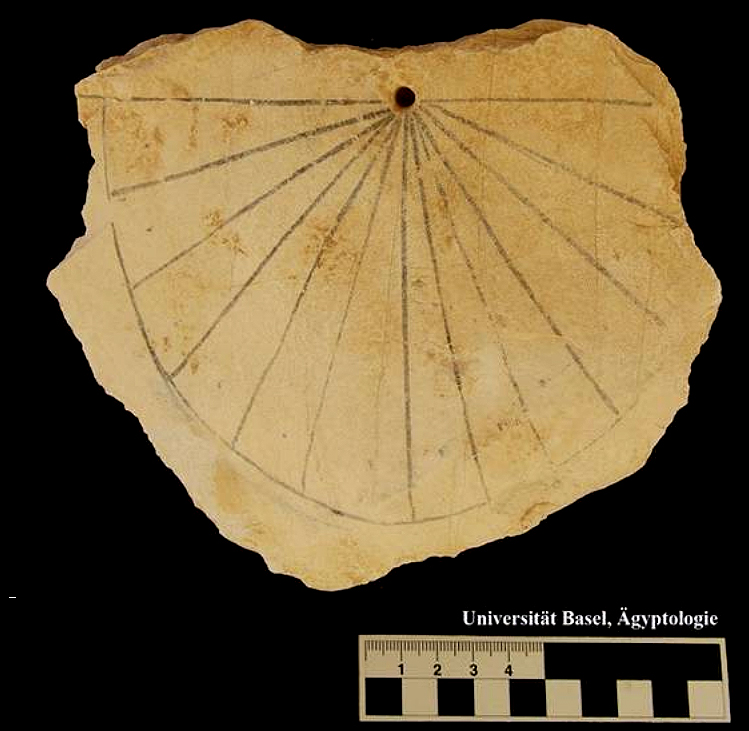
[photo Courtesy University of Basel]
|
Professor Dr. Susanne Bickel and her archeological team from the University of Basel found one of the oldest sundials in the world during this year’s excavation in the Valley of the Kings. A limestone sundial was found near tomb KV61 during a survey of the surface rubble. The location of the dial corresponds to an area where there are remains of workmen’s huts dating to the Ramesside Period of the 13th century BCE.
The dial was most likely a vertical, south facing sundial. The horizon line of the dial is about 16 cm across with a hole at the mid point to hold a simple horizontal metal rod or wood stick gnomon, indicating that the gnomon displayed shadows of temporal (seasonally uneven) hours. The limestone dial has a black painted semicircle. On each side of the vertical noon line are 6 segments of about 15 degrees each, representing morning and afternoon temporal (seasonally uneven) hours. Small dots in the middle of each hourly segment serve for even finer timing. Nevertheless, the hour lines are not drawn with precision.
Read more: 13th Century BCE Ancient Egyptian Sundial Discovered
al-Shatir Sundial Technology Challenge of 1371
- Details
- Hits: 13628
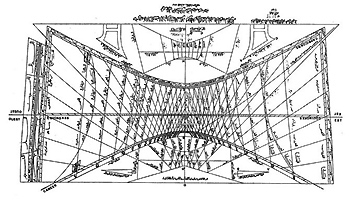 At 3pm on August 15th Roger Bailey of the North American Sundial Society will hold a public lecture on the historic Ibn al-Shatir sundial at the Great Falls Library in VA. The Analemma Society proposes to recreate the dial’s design, adapted for the latitude of Observatory Park, The Turner Farm, in Great Falls, VA.
At 3pm on August 15th Roger Bailey of the North American Sundial Society will hold a public lecture on the historic Ibn al-Shatir sundial at the Great Falls Library in VA. The Analemma Society proposes to recreate the dial’s design, adapted for the latitude of Observatory Park, The Turner Farm, in Great Falls, VA.
Hopefully this will be the second major dial at Observatory Park maintained by the Analemma Society in conjunction with the Fairfax County Park Authority. The first dial was a commemorative dial designed and built by Tony Moss for the 400th anniversary of Jamestown, VA.
“High on the minaret of the Great Mosque in Damascus is a remarkable sundial created by Ibn al-Shatir in 1371. Through the 10th to 14th centuries the science of astronomy, timekeeping and sundials had advanced in major Moslem centres like Cairo and Damascus. Based on the developing science of timekeeping, Ibn al-Shatir designed a unique instrument that was a breakthrough…The sundial features equal hours rather than the previous system of dividing the day into 12 hours regardless of the seasonal changes.”
Gardom's Edge Monolith
- Details
- Hits: 11078
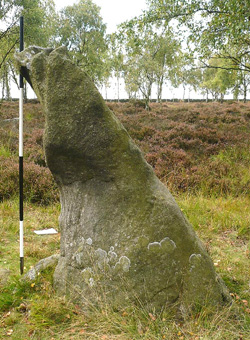
Gardom Edge Monolith
[photo courtesy of Dan Brown, Nottingham Trent University]
|
A two meter standing stone at Gardom’s Edge may be an astronomically aligned monolith set up during the Neolithic period 2,500 – 1,500 BCE to recognize the summer solstice. According to Dan Brown, Andy Alder and Elizabeth Bemand of Nottingham Trent University, “Such an astronomically aligned stone could be described as a seasonal sundial … However it is not intending to mark local time during a day or measure exact dates during a year. Rather the seasonal shadow casting allows for the display of cosmological knowledge such as the ‘death’ and ‘rebirth’ of the Sun”…
The upward facing north slope of the stone remains in shadow until near the time of Summer solstice. Today the stone points south at an upward tilt of 58.3° +/- 2.9°, seemingly aimed at the highest rise of the summer sun, computed for the Gardom Edge latitude of 53.26° as 60.7° in Neolithic times.
Pantheon Sundial
- Details
- Hits: 15689
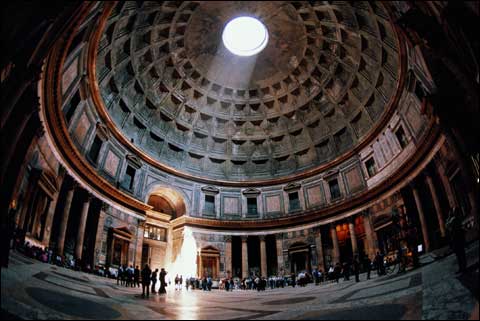
One of the most iconic buildings in the world, the Pantheon in Rome is an enduring testament to the power and glory of ancient Rome. At the same time, it has also always posed something of a mystery. The only source of natural lighting is a thirty-foot diameter hole at the very top of the hemispherical dome, often referred to as the "oculus".
Working since 2009, scholars Guilio Magli and Robert Hannah discovered that at midday on the equinoxes, a shaft of circular light shines through the oculus and illuminates the Pantheon's entrance.
Early Astronomers
- Details
- Hits: 10898
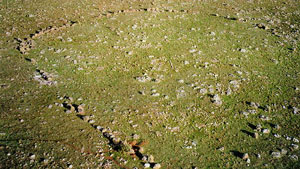 [photo credit: Andrew Caswell and
Robert Cockburn of The Daily Telegraph ]
|
Ask a person what is the earliest evidence of humans building structures to mark significant celestial events, and one offer "Stonehenge". But there may be a structure built thousands of years early according to some experts in Australia.
A site "down under", name Wurdi Youang, estimated to be older than 10,000 years, has a strange arrangement of stones with alignments toward solstices and equinox that has been scrutinized by several eminent Australian scientists. They conclude that the placement and alignment of the stones is not an accident and there is a perfect alignment with the setting sun on the mid-summer day. Understandably, the exact location of the site is a well-guarded secret, but it is known to be west of Melbourne approximately 80 kilometers.
Rare Astrolabe Discovered by Chance in Verona Museum
- Details
- Hits: 529
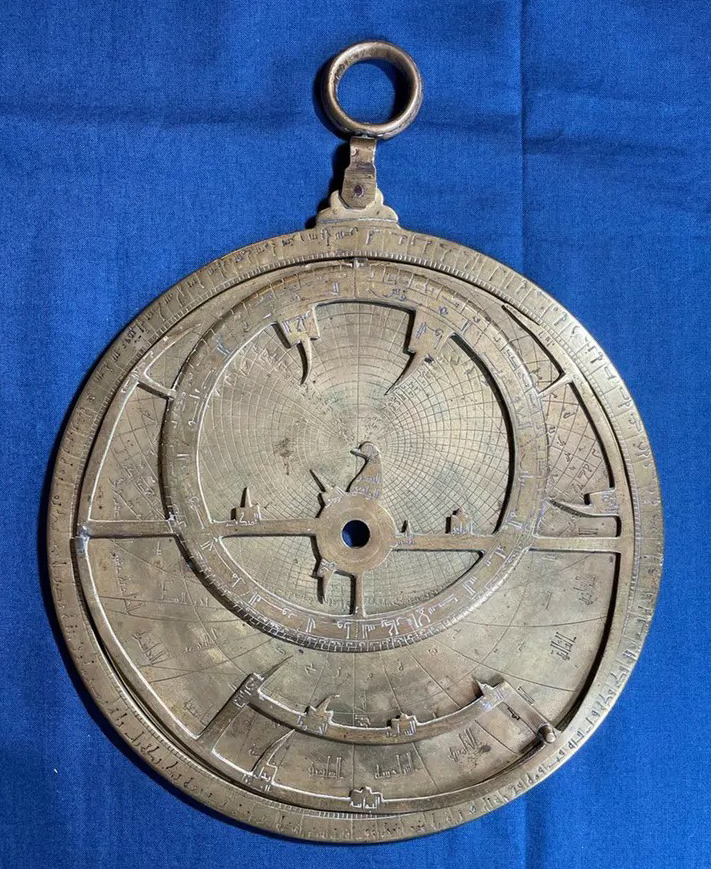 Dr. Federica Gigante, from Cambridge Univerity's History Faculty, discovered a rare astrolabe sequestered in a museum at Verona, Italy. Publishing in Nuncius (1 March 2024) Dr. Gigante presents "a hitherto unknown remarkable astrolabe from Al-Andalus which likely belonged to the collection of Ludovico Moscardo (1611–1681) assembled in Verona in the seventeenth century. The astrolabe is datable to the eleventh century and features added Hebrew and Latin inscriptions. It underwent many modifications, additions, and adaptations as it changed hands and owners over time thus becoming a palimpsest object. With its added translations from Arabic into Hebrew, the astrolabe closely recalls the recommendations prescribed by the Spanish Jewish polymath Abraham Ibn Ezra (1089–1167) in the earliest surviving treatise on the astrolabe in the Hebrew language written in 1146 precisely in Verona." Today the astrolabe is preserved at the Fondazione Museo Miniscalchi-Erizzo.
Dr. Federica Gigante, from Cambridge Univerity's History Faculty, discovered a rare astrolabe sequestered in a museum at Verona, Italy. Publishing in Nuncius (1 March 2024) Dr. Gigante presents "a hitherto unknown remarkable astrolabe from Al-Andalus which likely belonged to the collection of Ludovico Moscardo (1611–1681) assembled in Verona in the seventeenth century. The astrolabe is datable to the eleventh century and features added Hebrew and Latin inscriptions. It underwent many modifications, additions, and adaptations as it changed hands and owners over time thus becoming a palimpsest object. With its added translations from Arabic into Hebrew, the astrolabe closely recalls the recommendations prescribed by the Spanish Jewish polymath Abraham Ibn Ezra (1089–1167) in the earliest surviving treatise on the astrolabe in the Hebrew language written in 1146 precisely in Verona." Today the astrolabe is preserved at the Fondazione Museo Miniscalchi-Erizzo.
"This isn't just an incredibly rare object. It's a powerful record of scientific exchange between Arabs, Jews, and Christians over hundreds of years," said Dr. Gigante.
Site Search
Sundial Question?
Current Sun
Sundial = Mean Sun + EoT
Select Sundials by State/Province
Who's Online
We have 657 guests and no members online
